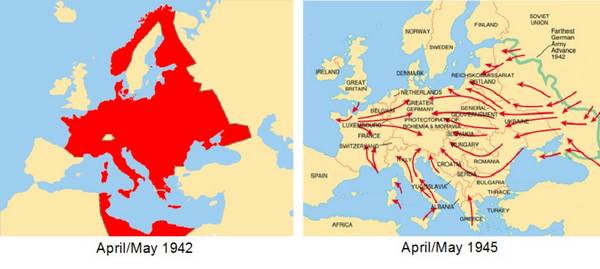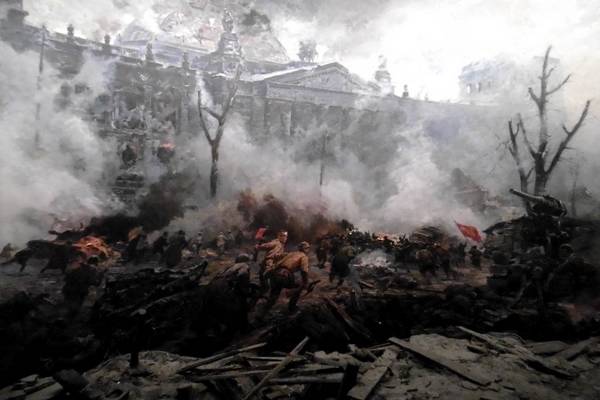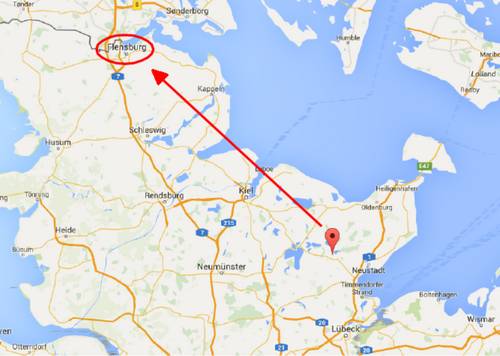April & May 1945
The map of the Third Reich in April/May 1945 was very different to that earlier in the war.

Although the Scandinavian countries were still firmly under occupation, the Third Reich was being squeezed from the south, west and east.
- From the 10th June 1943, Allied forces were advancing north through Italy.
- Following D-Day in June 1944, Allied forces were advancing eastwards and had crossed the Rhine by March 1945.
- In August 1944, Operation Dragoon, the invasion of southern France began.
- British forces entered Greece in October 1944 as the Germans withdrew northwards.
- In April 1945 the Russians had retaken the majority of their lost territory and were crossing the Oder and approaching the "Gates of Berlin" a mere 70km from the capital.
On the 30th April 1945 Adolf Hitler (and the newly wed Eva Braun) committed suicide in the bunker below the Reich Chancellery.

The garden of the Reich Chancellery where the bodies of Adolf and Eva Hitler were burned.
The emergency exit from the bunker is the doorway to the left of the picture.
Photo credit: Bundesarchiv, Picture 183-V04744

Hitler had cancelled the 1941 decree which named Hermann Göring as his successor in the event of his death. To replace him, Hitler named Großadmiral Karl Dönitz as the new Führer.
Between the 20th April and 2nd May, the Russians fought to capture Berlin. After a ferocious battle, involving hand to hand fighting, the Reichstag (the best known symbol of their "fascist enemy") fell to the Russian forces. The Red Flag being raised above the battered building was a symbolic act marking the end of the battle.

This image of the battle is taken from a diorama at the German-Russian Museum in Karlshorst, Berlin.
On the 1st May 1945 Dönitz issues his "Order of the Day to the Armed Forces":
I expect discipline and obedience. Chaos and ruin can be prevented only by the swift and unreserved execution of my orders. Anyone who at this juncture fails in his duty and condemns German women and children to slavery and death, is a traitor and a coward. The oath of allegiance that you took to the Führer, now binds each and every one of you to me, whom he himself appointed as his successor.
On the 2nd May 1945, Admiral Dönitz (as Head of State) asked Lutz Graf Schwerin von Krosigk (a senior German official) to form a new Government.
The location of this Government moved from Plön to a naval station near Flensburg..........hence the name "Flensburg Government".
The most important item on the agenda was to try and negotiate a surrender in the west only or arrange a series of partial capitulations that would give time for German forces to escape from Soviet controlled areas.

Flensburg, on the border with Denmark, was still under German control.
The nearby port of Lübeck was captured by the British on the same day as the Government's first meeting.